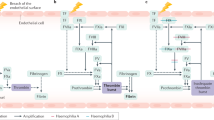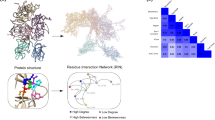Abstract
FVIII is synthesized as a single chain precursor of approximately 280 kD with the domain structure of A1-A2-B-A3-C1-C2 and it circulates as a series of metal ion-linked heterodimers that result from cleavages at B-A3 junction as well as additional cleavages within B domain. Factor VIII is converted to its active form, factor VIIIa, upon proteolytic cleavages by thrombin and is a heterotrimer composed of the A1, A2, and A3-C1-C2 subunits. A1 subunits of factor VIIIa terminates with 36 residue segment (Met337-Arg372) rich in acidic residues. This segment is removed after cleavages at Arg336 by activated protein C, which results in inactivation of the cofactor. In the present study, site-directed mutagenesis of FVIII at Arg336 to Gln336 was performed in order to produce an inactivation resistant mutant rFVIII (rFVIIIm) with an extended physiological stability. A recombinant mutant heavy chain of FVIII (rFVIII-Hm; Arg336 to Gln336) and wild-type light chain of FVIII (rFVIII-L) were expressed in Baculovirus-insect cell (Sf9) system, and a biologically active recombinant mutant FVIII (rFVIIIm) was reconstituted from rFVIII-Hm and rFVIII-L in the FVIII-depleted human plasma containing 40 mM CaCl2. The rFVIIIm exhibited cofactor activity of FVIIIa (2.85 x 10(-2) units/mg protein) that sustained the high level activity during in vitro incubation at 37 degrees C for 24 h, while the cofactor activity of normal plasma was declined steadily for the period. These results indicate that rFVIIIm (Arg336 to Gln336) expressed in Baculovirus-insect cell system is inactivation resistant in the plasma coagulation milieu and may be useful for the treatment of hemophilia A.
Similar content being viewed by others
Article PDF
Author information
Authors and Affiliations
Rights and permissions
This is an Open Access article distributed under the terms of the Creative Commons Attribution Non-Commercial License (http://creativecommons.org/licenses/by-nc/3.0/) which permits unrestricted non-commercial use, distribution, and reproduction in any medium, provided the original work is properly cited.
About this article
Cite this article
Oh, SH., Lee, MY. & Song, D. Synthesis of recombinant blood coagulation factor VIII (FVIII) heavy and light chains and reconstitution of active form of FVIII. Exp Mol Med 31, 95–100 (1999). https://doi.org/10.1038/emm.1999.16
Published:
Issue date:
DOI: https://doi.org/10.1038/emm.1999.16



